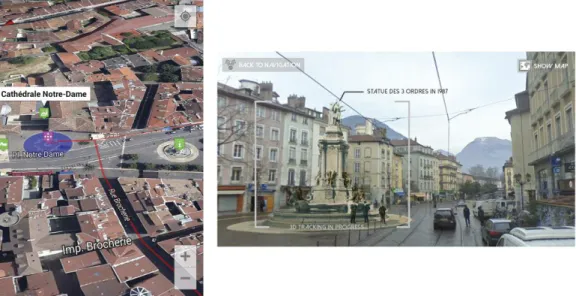Mobile Augmented Reality Applications for Smart Cities
Texte intégral
Figure

Documents relatifs
Also, the absence of significant effects of patients’ age, level of cognitive functioning, type of schizophrenia (similar results were observed in EOS and AOS individuals), and
These specialized markets devoted to the retail of costly foodstuffs first appeared in Italy during the Republic, even if their layout and function was inspired by the commercial
any kind of formal relation between adverse effect and the stressor is asked for. Ideally, the answer to this question will involve a statistical correlation or re- gression
Bouvry, “Profiling Energy Efficiency of Mobile Crowdsensing Data Collection Frameworks for Smart City Applications,” in 6th IEEE International Conference on Mobile Cloud
Table 1 summarises the above-mentioned key characteristics that determine the re- liability and utility of mobile augmented reality approaches (and provides quantitative
The sensors and the database are connected to libraries that are developed with our ARCS framework (Augmented Reality System Component) which is using a
Augmented Reality framework; Middleware design and implementation; Component-based architecture; Distributed Systems; Mobile
solutions to key problems (teach students how to read and execute working drawings and sketches, assembly drawings, schematic images, build virtual models) when students